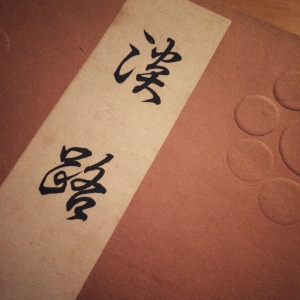
On May 12th I’m going to sing in the chorus for the maibayashi (dance and music excerpt) from the Noh Awaji at the Ninomaru Castle Takigi Noh in Matsuyama (Ehime pref.). This time the shite is going to be Higaki Takafumi, while Udaka Michishige is going to lead the chorus.
It is the first time for me to study Awaji, a first category (god Noh) celebratory piece which is not performed as often as other plays from the same groups such as Takasago. In fact the utaibon libretto is only available in the kyūhon ‘old book’ format, with kuzushi-ji cursive characters and hentaigana alternative phonetic writing, making it rather hard to read even for Japanese native speakers. I have recently purchased a lot of these old books, which reminds me that I should soon or later write a post comparing new and old utaibon writing and notation style.
As for Awaji, it follows the typical first category structure: imperial officers are on their way to visit Awaji, thought to be the first island to be created when the godly couple Izanami and Izanagi stirred the primordial sea with a spear. The brine dropping from the spear hardened into islands, thus creating the Japanese archipelago. The officers meet an old man cultivating a rice field attached to a shrine and discuss with him the name Ni-no-miya shrine, an appellation that suggests the two gods Izanami and Izanagi, representing the actions of sowing and reaping. Quoting from ancient poems, the old man chants the fertility of the Japanese soil. Soon the old and mysterious man disappears, only to re-enter in the second half of the play as the male god Izanagi, dancing and bestowing long life and happiness to the land.
